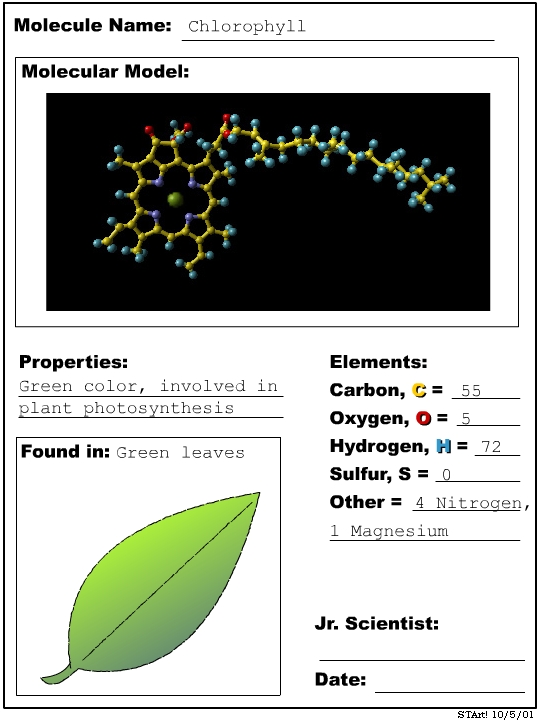Illustrative Example:
Third Grade STArt! Workshop: Molecules
with Tangible Properties.
1. Introduce Physical Science concepts based
on California academic standards, such as:
3rd/1h) All matter is made up of small particles called atoms,
too small to see with the eyes.
3rd/1i) Science experiments show that there are more than 100 different
types of atoms, which are presented on the periodic table of the elements.
3rd/2d) An object is seen when light traveling from the object enters
the eye.
Discussion: Our world is filled with colors and smells. These colors and
smells are caused by substances made up of molecules, built from elements
found on the periodic table. We see colors when light is reflected off
objects. Different substances reflect colors differently, and therefore
will have unique colors. View colored pigments and colored foodstuffs
under a microscope when available. Smells are caused by molecules carried
through the air that are sensed by our nose. For example, many sulfur-containing
compounds have strong smells. Note: as with any scientific activity, nothing
should ever be placed in one’s mouth.
2. Demonstrate molecular visualization software. Point out similar
atoms within molecules. Note how many carbon, oxygen, hydrogen, and sulfur,
atoms are found within each molecule. Where are these elements placed
on periodic table?
View models of molecules with tangible properties such as:
- 10 stinkiest molecules (strong smelling molecules from fish,
garlic, onion, and broccoli, for example. Note presence of sulfur.)
- molecules involved in flavors or aromas (vanilla, mint, cinnamon,
etc.)
- pigments found in food and plants, or used by Native American cultures.
3. Workshops explore how the elements combine to form molecules with very
specific properties.
A) Human Polymer: Create costumes of sugar molecules using balloons,
then students hold hands to form a starch polymer. (Note: National Chemistry
Week often follows Halloween!)
B) Design "Molecular Baseball Cards." Each student selects
a molecule involved in a color or a smell. He/she print out or draws the
molecular model, attaches samples of its characteristic color or smell,
and describes other features such as what they like about it and its elemental
composition (how many C, H, O or S atoms). For a "scratch and
sniff" component, glue or rub spices onto paper (vanilla, mint,
cinnamon, garlic), then combine with images of corresponding molecules.

